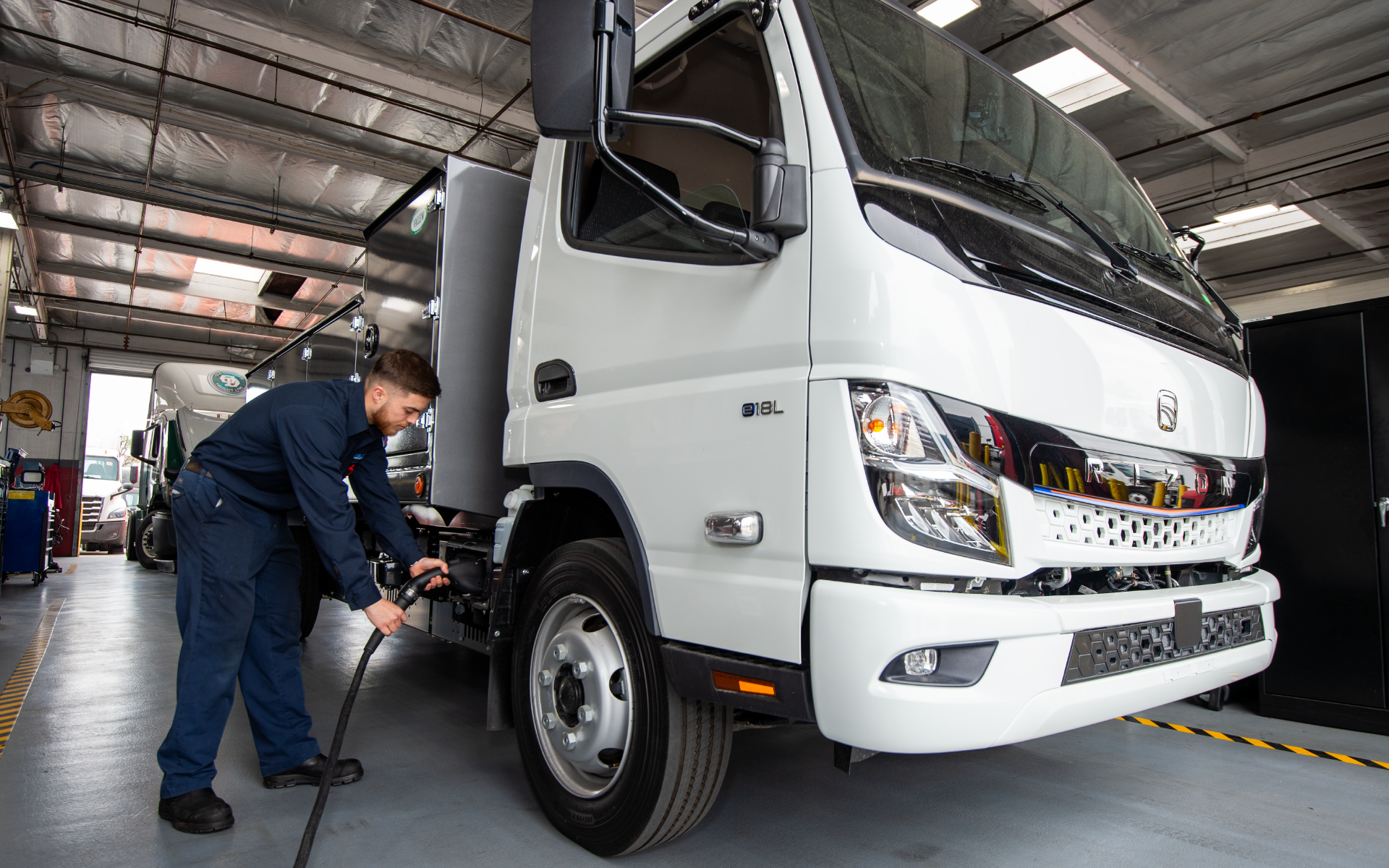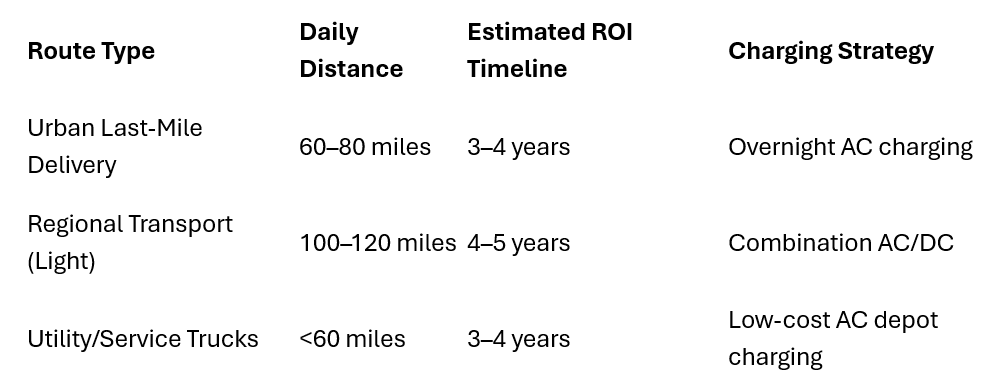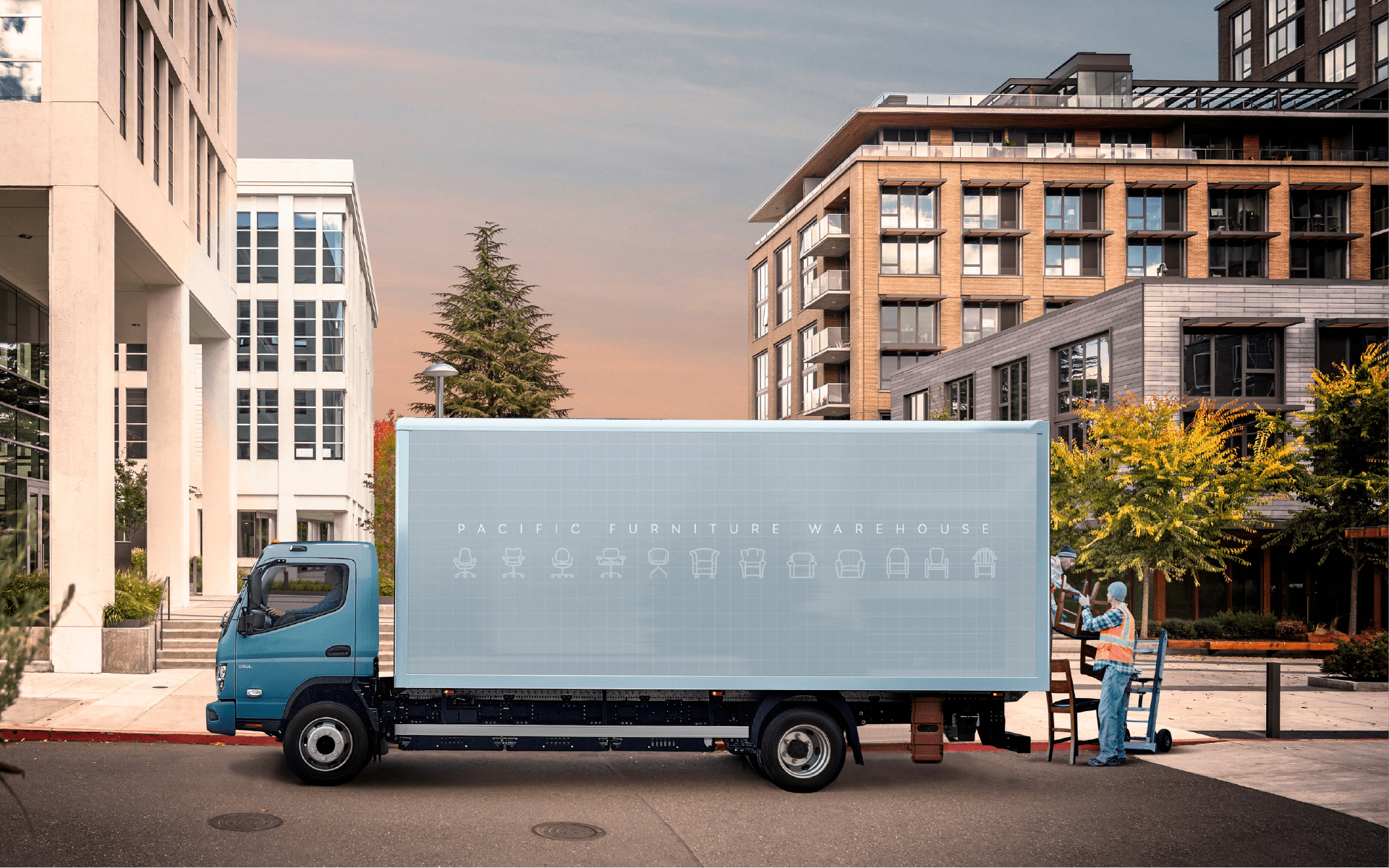Calculating return on investment (ROI) for electric vehicle trucks—especially commercial EVs—isn’t as simple as comparing sticker prices. Fleets must consider charging infrastructure, duty cycles, local incentives, maintenance costs, and route profiles. Unlike passenger EVs, commercial trucks are workhorses. Their value is tied directly to how they operate—particularly how and where they’re driven.
The Role of Route Consistency in EV ROI

Route predictability is a major advantage for electric commercial vehicles. A daily range of 70–120 miles allows fleets to match battery capacity to actual needs, control charging needs, and forecast operating costs with far more precision than in typical consumer EV use.
For example, a RIZON e18L—one of several RIZON models—is specifically built for urban and regional deliveries. Its usable range of 115–160 miles fits most last-mile logistics, refrigerated goods delivery, and service truck operations.
Key Factors That Influence ROI

Several key inputs affect the ROI timeline:
●Energy cost vs. diesel cost
EVs save money every mile due to lower electricity costs and superior energy efficiency. Electric rates, particularly AC charging, is typically cheaper than diesel.
●Charging method (AC vs DC)
AC charging is cheaper and best suited for overnight depot charging; DC fast charging is ideal for top-offs but costs more per kWh.
●Daily mileage and route structure
Fleets that travel predictable daily routes can maximize range use and minimize downtime.
●Maintenance and uptime
EVs have fewer moving parts—no oil changes, fewer brake repairs—resulting in less downtime.
Incentives and grants
In the U.S., programs like HVIP and ISEF significantly reduce upfront costs. In Canada, iMHZEV can offset tens of thousands per unit.
How RIZON Class 4–5 EVs Maximize Savings

RIZON’s lineup of Class 4–5 electric trucks is designed for urban, regional, and vocational use cases. For example, the e16L model offers up to 160 miles of range with a 116 kWh usable energy, making it well-suited for local delivery fleets. Key features across the lineup that support long-term ROI include:
●AC and DC charging support
●Driver-assist safety tech
●Durability designed for commercial duty cycles
●Lower maintenance costs with telematics for fleet optimization
Sample ROI Modeling Based on Route Type
Let’s break it down by use case:

Total Cost of Ownership (TCO) Comparison: Diesel vs EV
Here’s how operating costs shake out in the U.S. (per 100 miles) and in Canada (per 100 kilometers):
United States (Per 100 Miles) using national average pricing

California (Per 100 Miles) using state average pricing

Canada (Per 100 Kilometers) using national average pricing

Summary:
●Savings up to 70% per mile over diesel with AC charging, depending on your country and region.
●Even DC fast charging remains significantly cheaper than diesel in both markets.
Unlocking Additional Incentives and Support
RIZON customers may be eligible for:
U.S.:
●California HVIP ($60,000+ per truck)
●ISEF for small fleets
Canada:
●iMHZEV program ($75,000 CAD per vehicle)
●Provincial and municipal subsidies
These programs shorten the ROI timeline significantly—often by 1–2 years.


